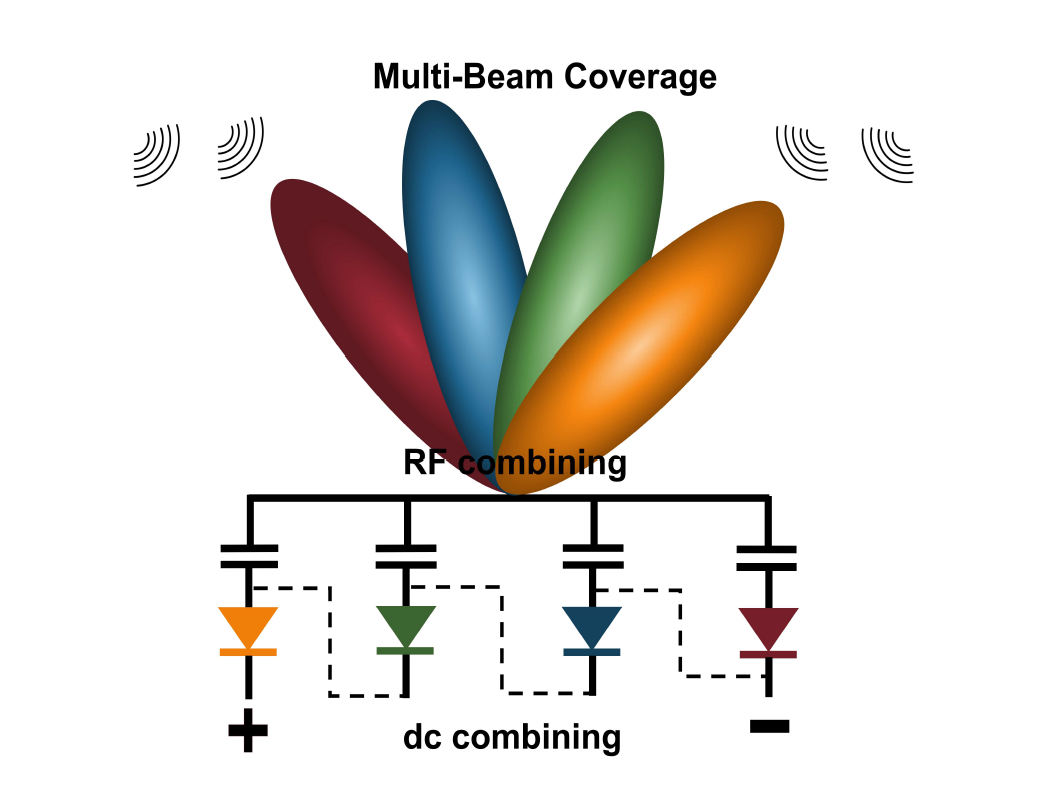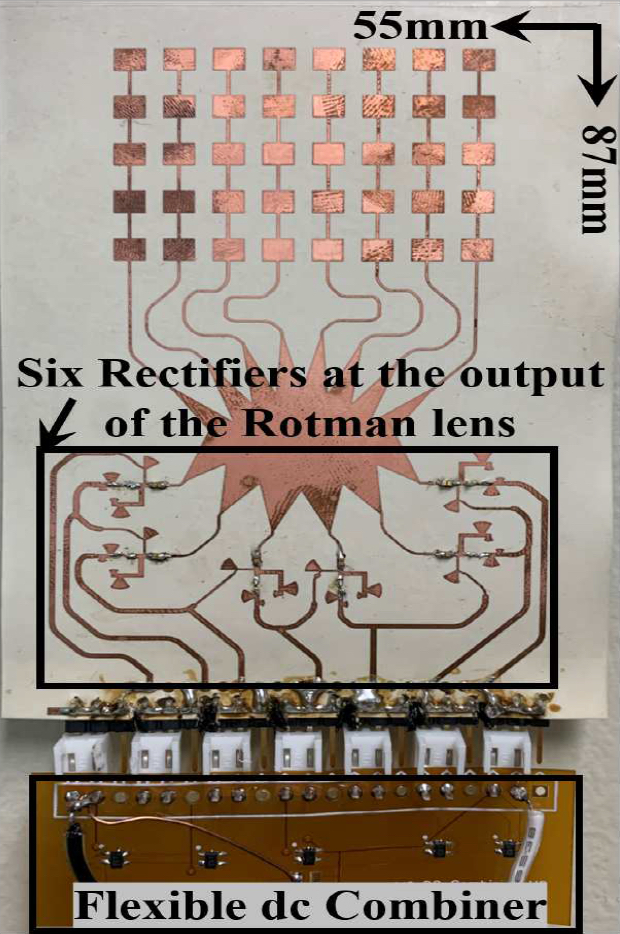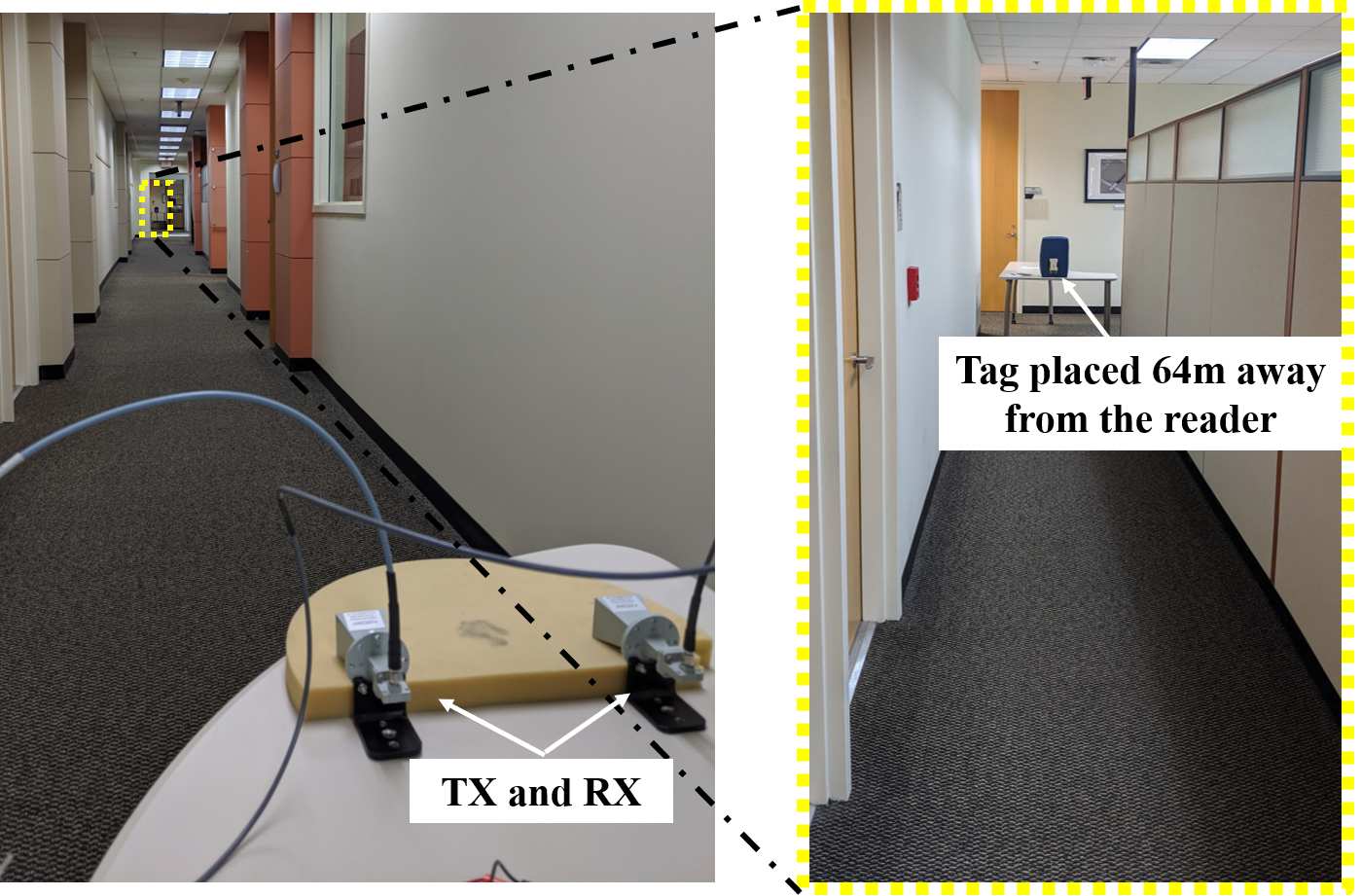This technology is a flexible Rotman lens-based RFID system capable for the first time of mm-wave harvesting and communicating in the 28-GHz band. It enables the implementation of the first fully flexible, energy autonomous backscattering RFID tag operating in 5G. This revolutionary innovation could effectively eliminate the need for batteries in the increasingly prevalent Internet of Things (IoT) market by harvesting power from 5G and using its infrastructure to communicate.
Its novel antenna approach addresses the tradeoff between angular coverage and turn-on sensitivity with a structure that merges unique radio frequency and direct current (DC) combination techniques, thereby enabling a system with both high gain and large beamwidth. The technology has been demonstrated to achieve a 21-fold increase in harvested power and twice the communication range compared with a referenced counterpart, while maintaining identical angular coverage, making its size suitable for IoT applications without requiring costly high-resolution fabrication.
Leveraging the simultaneous high gain and wide angular coverage, the Georgia Tech RFID device results in a remarkable radar cross section (RCS), measured in both planar and severe bending conditions. With an added low power oscillator, Georgia Tech researchers tested its detectability as a backscatterer at an unprecedented range of up to 64 meters while displaying a power consumption as low as 2.64 μW, effortlessly supplied by its flexible solar cell in normal office indoor conditions.
- Large coverage: Provides a unique combination of large angular coverage and turn-on sensitivity in both planar and bent configurations
- Long range: Demonstrates the potential for RFIDs with practical reading ranges over 1.8 km
- Scalable: Scales in size to a precise degree, enabling selection of the optimal tradeoff between size and harvested power/reading range
- Energy efficient: Functions with a power consumption in the order of a miniscule 2.64 μW and a 1.2-V voltage requirement supplied by a flexible solar cell or through harvested 5G power
This technology is poised to use the high-allowed effective isotropic radiated power (EIRP) associated with the growing establishment of 5G networks to create a wireless power grid that could power sensors and telecommunications technologies. More specifically, its applications include:
- 5G-powered battery-less nodes for IoT applications
- Kilometer-range passive mm-wave RFIDs
- Radar surveillance systems
- Environmental sensing, particularly for smart cities
- Logistics tracking
- Telecommunications
Revolutionary developments in the fields of mm-wave and IoT technologies have created a high demand for low-power, high-gain, and orientation-agnostic tags. In particular, the advent of 5G networks opens the door to myriad opportunities for the Internet of Things. In addition to the advantages of high transmitted power available at 5G, moving to mm-wave bands makes the realization of modular antenna arrays possible, leading to fine scaling of the antenna aperture. Unfortunately, large-gain antennas have been hindered by their inability to provide isotropic radiation.
Alternative approaches must balance the tradeoff between angular coverage and harvested power. Until now, no alternative approach has been able to do both simultaneously. Since it does not rely on any active circuitry, the Rotman lens is the ideal candidate for mm-wave applications due to its design simplicity, ultra-large bandwidth, high gain, and wide angular coverage. Georgia Tech’s invention is unique thanks to its ability to internally combine the RF power collected by all the antennas connected to it and focalizing this power to one of its ports. It provides a scalable, high-beamwidth system that provides both high gain and wide angular coverage in the 28-GHz band for the first time.
How It Works
Operating just like an optical lens, the Rotman lens introduces differential propagation time delays to wavefronts that impinge onto various points of its surface. Tuning the shape of the lens according to geometrical-optics approximation results in a lens-shaped structure with one angle of curvature on the beam-port side and another on the antenna side. This enables the structure to map a set of selected radiation directions to an associated set of beam-ports. The lens is then used as an intermediate component between the receiving antennas and the rectifiers for 5G energy harvesting. This helps maintain a stable output with maximum efficiency regardless of the source location when the rectified products of each of the ports are DC-combined. Specifically, all the electromagnetic energy collected by the antenna arrays from one direction is combined and fed into one single rectifier, thereby maximizing its efficiency. The DC-combining circuit then sums up the DC power at all ports resulting from the rectification from different directions.
In its backscatter mode of operation, the carrier signal sent by the reader—which could be a 5G base station—and impinging from a given direction is combined to a single port, terminated by a single switchable load. Upon reflection on the load, the signal is re-emitted with high gain, passively, in the direction of the base station, thereby reducing the fraction of the power re-radiated in irrelevant directions and extending the reading range of the tag.

This technology enables dual combining (RF + DC) by the use of the Rotman lens between antennas and rectifiers.

Georgia Tech’s fully flexible, Rotman lens-based rectenna.

The fully flexible power-autonomous Rotman-based semi-passive RFID tag proof-of-concept prototype

The setup and environment used to measure the Rotman lens-based tag’s long-range capabilities
